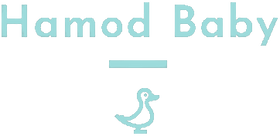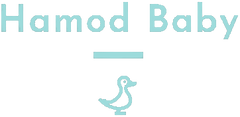Safety First: Babyproofing Your Home
Welcoming a new member into your family is an exhilarating experience, and ensuring their safety is paramount. As your little one begins to explore the world around them, it's crucial to create a secure home environment. In this blog post, we'll explore essential babyproofing measures, must-have products, and health tips to make your home a haven for your precious bundle of joy.

Babyproofing Products and Strategies
-
Secure Furniture and Appliances: Unstable furniture and appliances pose a risk to curious little explorers. Use furniture straps to anchor heavy items like bookshelves and dressers to the wall. Ensure that TVs and other electronic devices are also securely mounted.
-
Cabinet and Drawer Locks: Babies are notorious for their fascination with cabinets and drawers. Install locks on cabinets and drawers to prevent your little one from gaining access to potentially harmful substances or objects.
-
Outlet Covers: Covering electrical outlets is a simple yet effective way to prevent tiny fingers from exploring where they shouldn't. Outlet covers are inexpensive and readily available at most baby supply stores.
-
Gates and Barriers: Use safety gates to block off areas that are not baby-friendly, such as staircases and rooms with potential hazards. Make sure the gates are properly installed and meet safety standards.
-
Cord Management: Keep blind cords, electrical cords, and other long strings out of reach to avoid accidental strangulation. Consider using cord wind-ups to secure and manage loose cords.
First Aid and Health Essentials
-
Baby First Aid Kit: Assemble a well-stocked first aid kit specifically for your baby. Include items such as adhesive bandages, antiseptic ointment, infant pain reliever, a thermometer, and any prescription medications your baby may need.
-
Emergency Contacts: Keep a list of emergency contacts, including your pediatrician's number, poison control, and nearby family or friends who can assist in case of an emergency.
-
Baby-Friendly Cleaning Products: Opt for non-toxic, baby-friendly cleaning products to ensure a safe and clean environment. Store these products out of reach to prevent accidental ingestion.
-
Safe Sleep Environment: Create a safe sleep space for your baby by placing them on their back on a firm mattress with no loose bedding or toys. Use a sleep sack instead of blankets to keep them warm.
Monitoring Your Baby's Health and Well-Being
-
Regular Pediatrician Visits: Schedule regular check-ups with your pediatrician to monitor your baby's growth and development. Keep track of immunizations and discuss any concerns you may have.
-
Feeding and Nutrition: Whether breastfeeding or formula-feeding, ensure your baby is receiving proper nutrition. Introduce solid foods at the appropriate age and consult with your pediatrician about any dietary questions.
-
Watch for Developmental Milestones: Be attentive to your baby's developmental milestones, such as rolling over, sitting up, and crawling. If you have concerns about your baby's development, consult with your pediatrician.
-
Create a Safe Play Area: Designate a safe play area for your baby with age-appropriate toys. Regularly inspect toys for any potential hazards and ensure they meet safety standards.
In conclusion, creating a safe home for your baby involves a combination of babyproofing measures, first aid preparedness, and vigilant health monitoring. By taking these proactive steps, you're not only safeguarding your little one but also providing a nurturing and secure environment for them to thrive. Remember, safety first, and enjoy the journey of parenthood!

